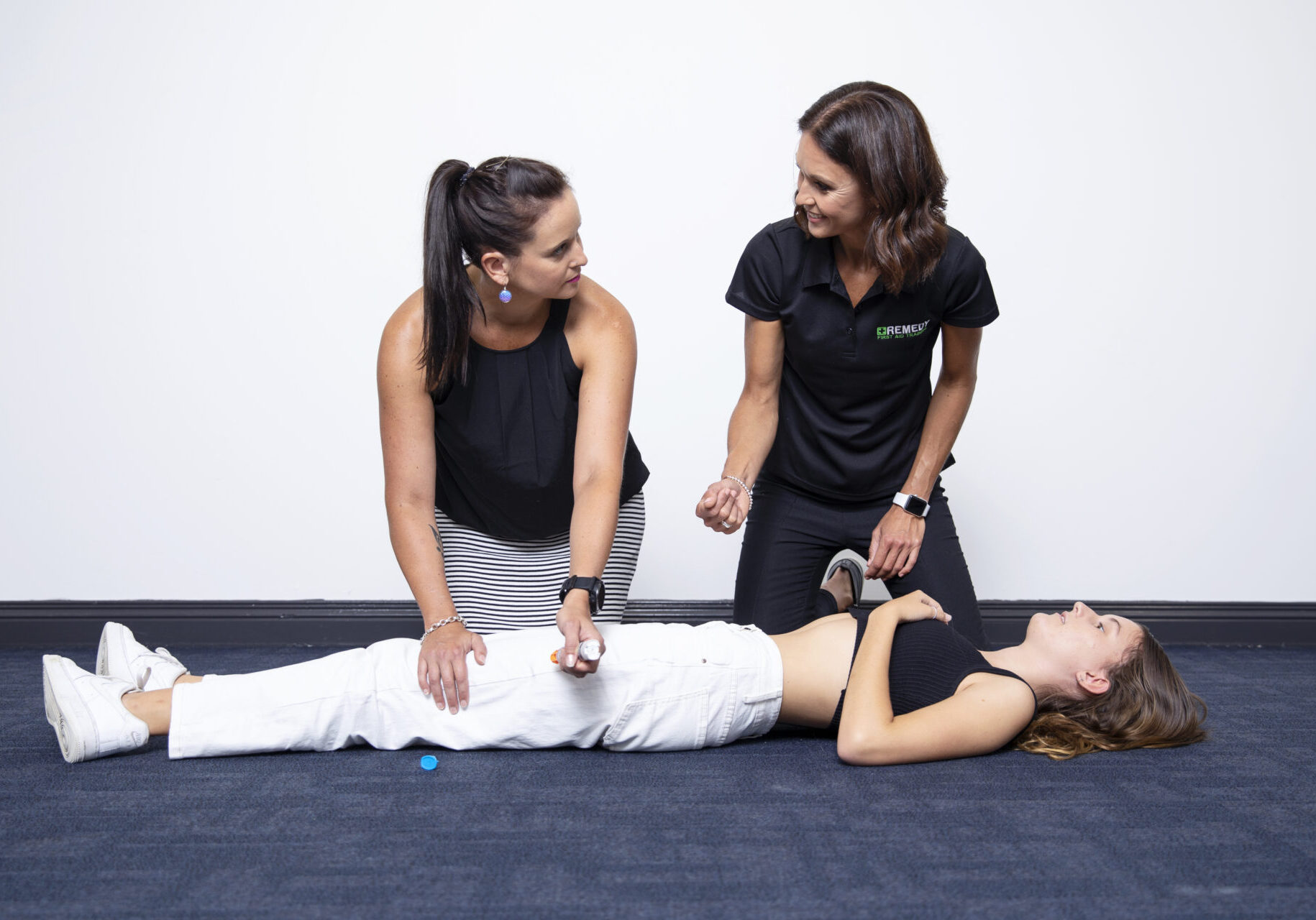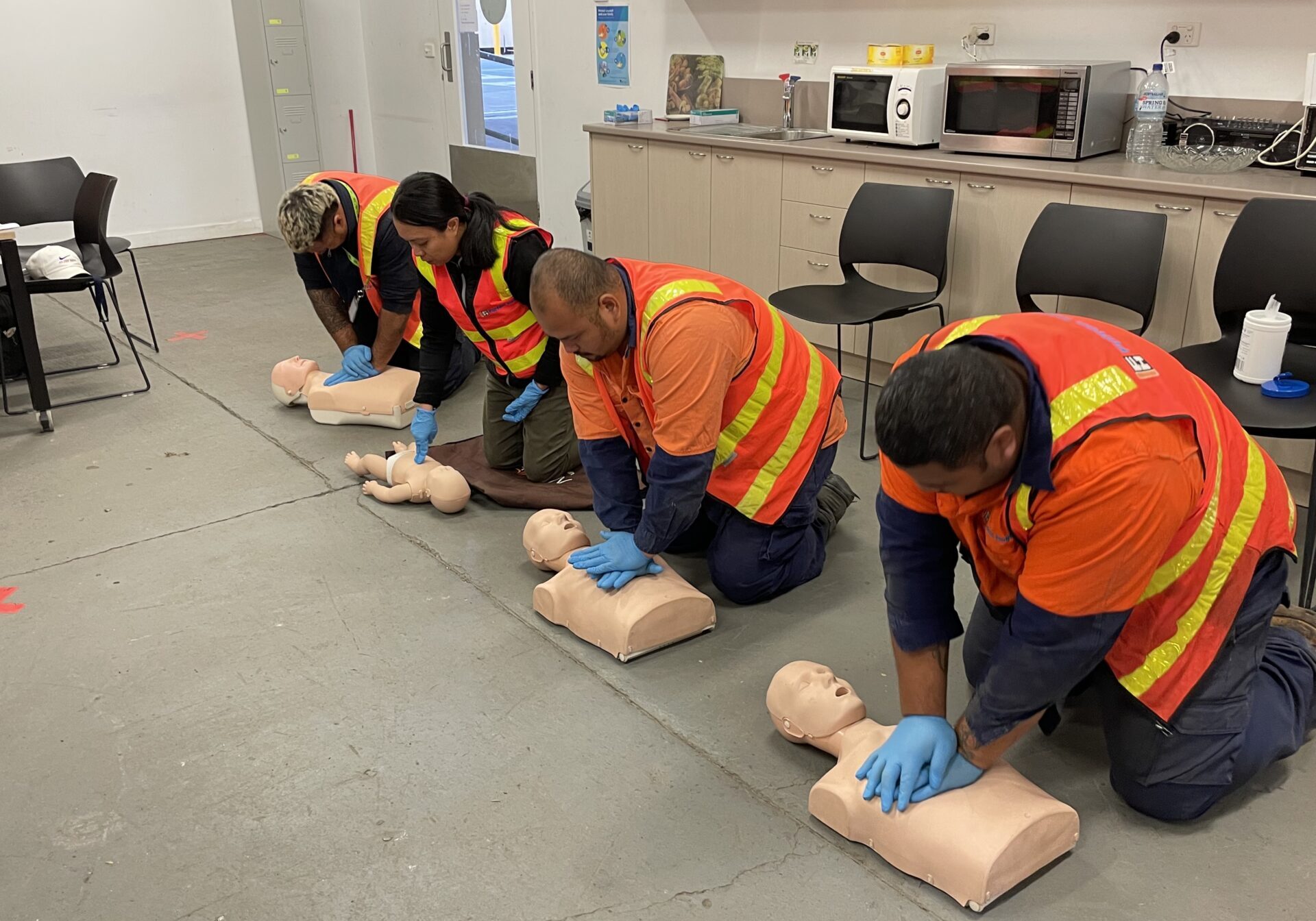Workplace First Aid Requirements
MAINTAINING A SAFE WORKING ENVIRONMENT IS CRITICAL FOR THE HEALTH AND SAFETY OF EVERYONE
We get lots of questions about workplace first aid requirements and it is timely at the start of the new year to ensure you follow some simple steps to ensure your workplace meets requirements and is safe for everyone.
Safe Work Australia sets requirements for workplace safety, which includes first aid requirements. Each workplace must ensure that they have fully trained First Aid staff and that First Aid equipment is available. These requirements will differ between high-risk workplaces, think factories, and low risk workplaces, such as offices, and the requirement is based on an individual workplace risk assessment.
WHAT DO YOU NEED TO KNOW?

Safe Work guidelines state that a person managing a business or workplace must ensure:
- the provision of first aid equipment for the specific workplace
- that each worker at the workplace has access to the equipment
- access to facilities for the administration of first aid
- an adequate number of workers are trained to administer first aid at the workplace
- workers have access to an adequate number of other persons who have been trained to administer first aid.

ALL WORKERS MUST HAVE ACCESS TO A FIRST AID KIT
At least one first aid kit must be available in the workplace and should include basic equipment for administering first aid for injuries, such as the following:
• Cuts, scratches, punctures, grazes and splinters
• Muscular sprains and strains
• Minor burns
• Amputations and/or major bleeding wounds
• Broken bones
• Eye injuries
• Shock.

The contents of first aid kits should always be based on an individual workplace risk assessment.
Some workplaces may have higher risk of certain injuries, for example eye injuries where work involves machinery or chemicals and may require extra items to treat specific types of injuries or illnesses.
Additional equipment may be needed in remote workplaces and first aiders may need to have additional training.
WORKPLACE FIRST AID REQUIREMENTS

Below are Safe Work Australia’s recommendations for what to include in your workplace first aid kit and how many first aiders you should have available.
Completing an individual risk assessment is necessary to determine the requirements for your workplace.
| Workplace | First Aiders | First Aid Kits | First Aid Rooms |
| Low Risk Workplaces | One first aider for every 50 workers | Basic First Aid Kit | Recommended for 200 workers of more |
| High Risk Workplaces | One first aider for every 25 workers | Basic first aid kit plus additional equipment identified for specific risks/hazards | Recommended for 100 workers of more |
| Remote High Risk Workplaces | One first aider for every 10 workers | In addition to the basic first aid kit • A heavy duty 10cm crepe bandage for snake bites • Large clean sheeting, for covering burns • Thermal blanket, for treating shock • Whistle for attracting attention • Torch/flashlight • Any equipment identified for specific risks/hazards |
N/A |
FIRST AID KIT LOCATION IN THE WORKPLACE
Quick access is the key! Workplace first aid kits need to be accessible in an emergency event. The location should be a prominent space where employees or first aiders can retrieve it quickly.
Areas with higher risk of injury or illness should always have a first aid kit nearby.
Emergency floorplans should have the locations of the first aid kits noted. If the workplace covers several floors at least one kit should be located on every second floor.
Portable first aid kits are also a must for mobile workers such as couriers, taxi drivers, bus driver, etc. These kits should be safely secured so as not to become a hazard in a collision.

Remedy First Aid have a range of first aid kits available which meet workplace requirements.
Click here to find out more!
EXTRA FIRST AID EQUIPMENT FOR THE WORKPLACE

AUTOMATED EXTERNAL DEFIBRILLATORS
Automated external defibrillators or AED’s are essential in the event of a cardiac arrest, and the sooner they are applied the better the outcome for the casualty.
Sudden Cardiac arrest can happen to anyone, anywhere, anytime . Having a defibrillator in your workplace could save someone’s life – it could be an employee, customer or client.
Defibrillators are easy to operate and can be used by an untrained person, although training will increase confidence and may increase the speed that it is applied.
Defibrillators in the workplace should be located in a central location, that is easily accessible to all employees with appropriate signage. The key really is communication, ensuring that everyone knows that the workplace has a defibrillator and where the defibrillator is located.
Remedy First Aid have a range of defibrillators to suit your workplace.
Find out more here!
FIRST AID REQUIREMENTS CHECKLIST
Here is a simple checklist to assist you with reviewing First Aid Requirements for your workplace:
| Do all workers have access to first aiders and first aid kits? |
| Are more first aid kits required? |
| Are more first aiders needed? |
| Do workers have access to first aiders at all times? |
| Do the first aid kits and modules suit the hazards at your workplace? |
| Are first aid kits well maintained and identifiable to workers? |
| Is a first aid room or health centre required? |
| Are first aid facilities well maintained? |
| Do first aiders have skills, training and competencies to provide first aid in your workplace and are their skills up to date? |
| Do workers know how to access first aid? Is there easy access for emergency services, like parking for an ambulance? |
We hope this blog has helped to simplify first aid requirements and assists you towards achieving a safe and healthy workplace.
To find out more on this topic, or to arrange onsite first aid training, or equip your workplace with first aid kits or lifesaving defibrillator, please contact us!
We’re here to help!
Workplace First Aid Requirements









